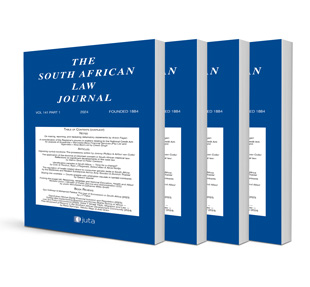
A comparative analysis of the Twin Peaks model of financial regulation in South Africa and the United Kingdom
Author: Mmiselo Freedom Qumba
ISSN: 1996-2177
Affiliations: Lecturer, University of Pretoria
Source: South African Law Journal, Volume 139 Issue 1, p. 78-113
https://doi.org/10.47348/SALJ/v139/i1a3
Abstract
This article examines the recent adoption of the Twin Peaks model by the United Kingdom and South Africa. An international and comparative analysis is provided. It observes that there is a gradual paradigm shift across the world towards the Twin Peaks model of financial regulation. There are slight variations in the design of the two countries’ Twin Peaks models. The variations in regulatory design indicate the flexibility of the Twin Peaks model and its adaptability to suit local conditions, regulatory culture, and the country’s specific needs. Therefore, while the South African model has drawn significantly from the experiences of other Twin Peaks jurisdictions, particularly the UK, South Africa has adopted the model to accommodate its own needs and unique characteristics. It is imperative for the success of the Twin Peaks model that it clearly delineates the objectives and functions of each regulator, and achieves effective co-ordination between them. This article warns that, given the potential overlaps and high levels of co-operation required between the different regulatory bodies in South Africa, there could be detrimental consequences if this complicated financial regulation regime is not properly managed.